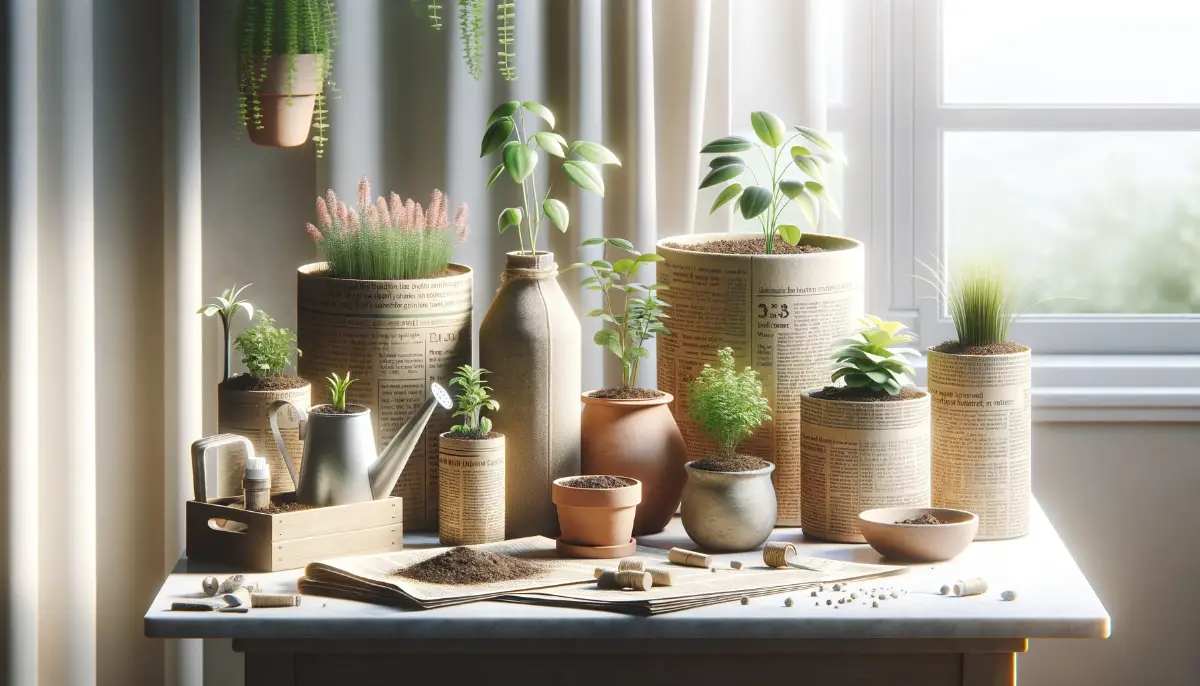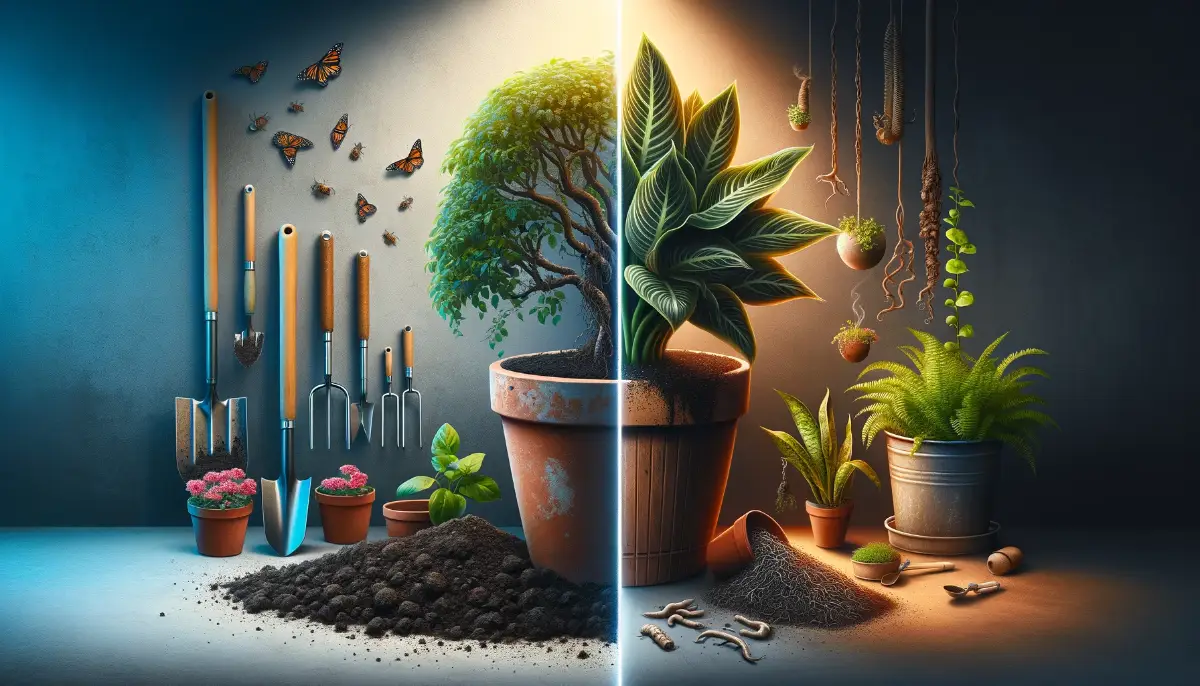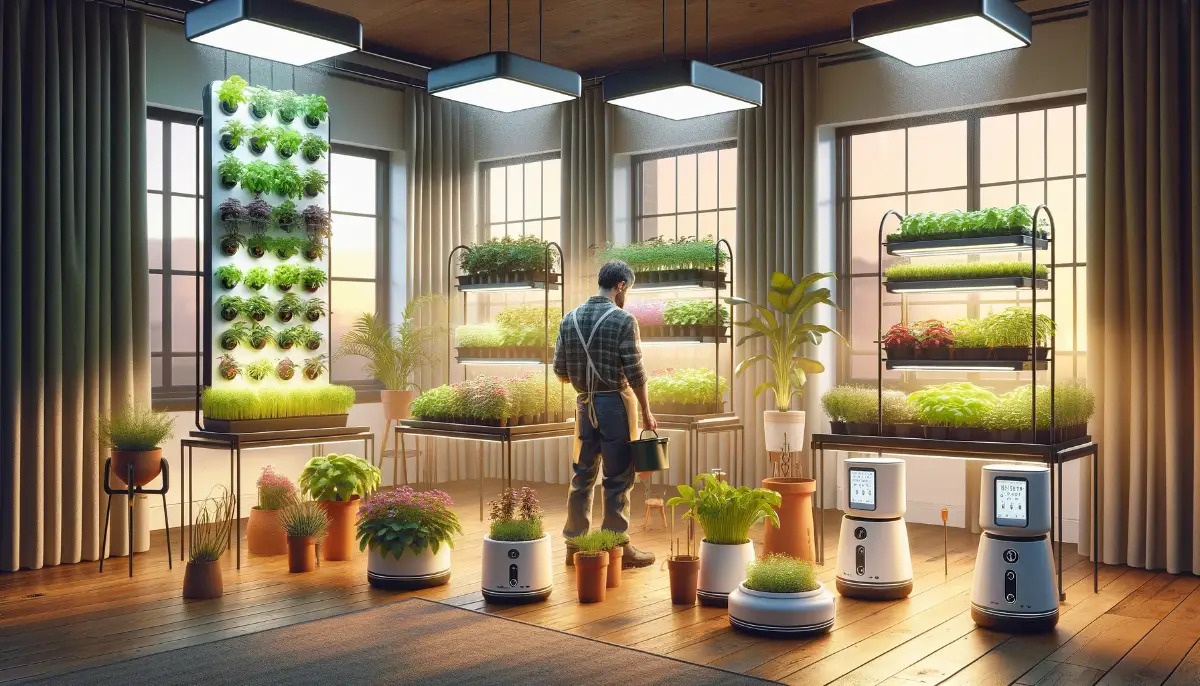For an eco-friendly indoor garden, consider materials like newspaper, clay (including ceramic and terra cotta), wood, bamboo, coconut, corn, rice husks, jute, hemp, and even recycled fabric for your containers and supplies. These materials offer various benefits, such as improved water movement, insulation against temperature changes, and biodegradability, contributing to a sustainable gardening practice. Upcycling and DIY options are also available for those looking to create unique, environmentally friendly plant containers.
Transforming your indoor space into a green oasis doesn’t require sacrificing sustainability. By choosing eco-friendly materials and adopting green gardening practices, you can create a beautiful, thriving indoor garden that aligns with your environmental values.
Sustainable Plant Containers
Choose Biodegradable Pots
- Newspaper and Recycled Fabric: Start seedlings in homemade pots crafted from newspapers or recycled fabric, offering a perfect biodegradable option for your young plants.
- Clay and Ceramic: Opt for clay or ceramic pots, which are durable, breathable, and made from natural materials that support healthy root growth.
- Wood and Bamboo: Wooden or bamboo containers provide a rustic look and are sourced from renewable materials, making them an excellent choice for eco-conscious gardeners.
- Coconut, Corn, and Rice Husks: These natural fibers can be fashioned into pots that are not only sustainable but also promote good drainage and air flow.
Upcycling and DIY Projects
Incorporate upcycling into your garden by transforming old items like jars, boots, or even furniture into unique planters. This approach not only reduces waste but also adds a personal touch to your indoor garden.
Soil and Plant Care
Eco-Friendly Soil Alternatives
- Coco Peat: A sustainable alternative to peat moss, coco peat is made from coconut husks and is excellent for water retention.
Natural Fertilizers and Pest Control
- Homemade Compost: Create your own compost from kitchen scraps and yard waste to nourish your plants naturally.
- Neem Oil and Soap Sprays: Use natural solutions like neem oil or mild soap sprays to combat pests without resorting to harmful chemicals.
Water Conservation Techniques
Recycle Household Water
Collect and reuse water from household tasks such as washing vegetables or boiling pasta. This not only conserves water but also repurposes nutrients for your plants.
Self-Watering Systems
Consider installing self-watering systems to reduce water usage and ensure your plants receive consistent moisture.
Supporting Biodiversity
Attract Beneficial Insects
Welcome beneficial insects like bees and ladybugs to your indoor garden by choosing plants that provide nectar and pollen. These natural pollinators will help your garden thrive and support local biodiversity.
Composting
Reduce waste and enrich your soil by setting up a small compost bin for your kitchen and plant scraps. Composting is a key component of eco-friendly gardening, transforming organic waste into valuable fertilizer for your plants.
Incorporating these practices into your indoor gardening not only contributes to a healthier planet but also can enhance the wellbeing of your plants and your living space.
FAQs on Eco-Friendly Indoor Gardening
What materials are best for eco-friendly plant containers?
For eco-friendly plant containers, consider materials like newspaper, recycled fabric, clay (including ceramic and terra cotta), wood, bamboo, coconut husks, corn, rice husks, jute, and hemp. These materials are sustainable and have a lower environmental impact compared to traditional plastic pots.
How can I water my indoor garden sustainably?
To water your indoor garden sustainably, collect rainwater or reuse greywater from household chores. Additionally, consider installing a drip irrigation system or using self-watering planters to minimize water waste.
What are some natural alternatives to chemical fertilizers and pesticides?
Natural alternatives to chemical fertilizers include homemade compost, tea leaves, Epsom salt, and banana tea. For pest control, try using neem oil, soap spray, or peppermint oil, which are effective against common pests and are non-toxic to pets and humans.
How does choosing native plants benefit my indoor garden?
Choosing native plants can enhance the eco-friendliness of your indoor garden by supporting local biodiversity and requiring less maintenance and resources, such as water and fertilizer. Native plants are adapted to the local climate and soil conditions, making them more resilient and easier to care for.
Can I use peat moss in my eco-friendly indoor garden?
While peat moss is a common ingredient in potting mixes due to its excellent water retention properties, it is not the most sustainable option because peat bogs are valuable carbon sinks. Coco peat, made from coconut fibers, is a more sustainable and equally effective alternative
How can I upcycle materials into plant containers?
You can upcycle various materials into plant containers by getting creative with items you already have. For example, old jars, cans, shoes, or even pieces of furniture can be repurposed into unique and personal plant containers. Always ensure proper drainage is added to these DIY pots to keep your plants healthy.
Is it necessary to use eco-friendly pots for all my plants?
While using eco-friendly pots is beneficial for the environment, it’s not strictly necessary for every plant. The key is to strike a balance and make sustainable choices whenever possible. If you already own plastic pots, continue using them to avoid waste. You can gradually transition to more eco-friendly options as you expand your garden or replace pots.









